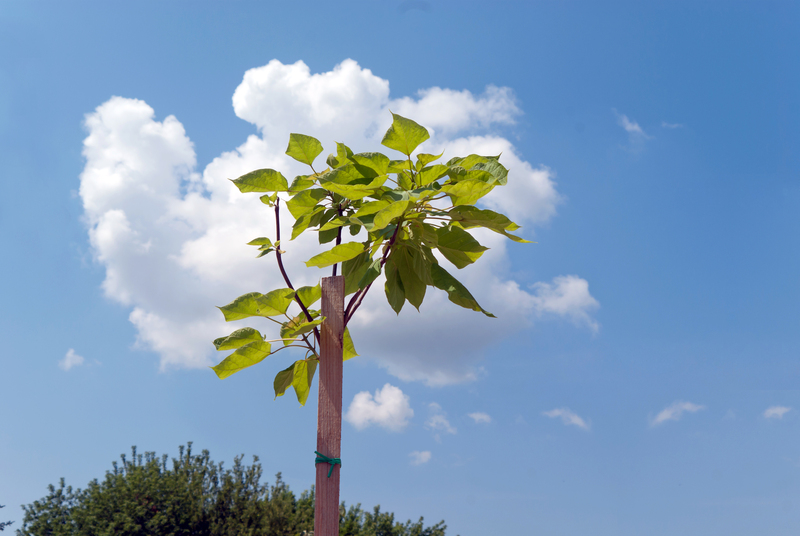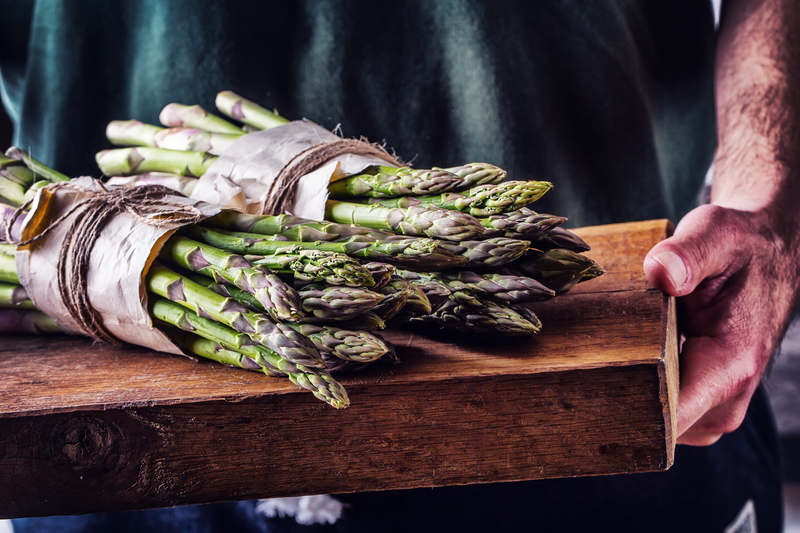Tips for Choosing the Right Plants for Sun or Shade Window Boxes
Window boxes are a wonderful way to add charm, color, and natural beauty to your home's exterior. Whether you want a burst of vibrant blossoms or a subtle lush greenery, the secret lies in selecting the perfect plants for your specific light conditions. In this detailed guide, you'll find all the information you need to choose the best sun or shade window box plants. We'll explore key factors, offer actionable tips, and share top plant recommendations to help you create eye-catching and thriving displays.
Understanding Light Exposure for Window Boxes
Before selecting plants, it's crucial to determine how much sunlight your window boxes receive. Placement will dictate the difference between a flourishing window box and one that struggles to survive.
How to Assess Sunlight
- Full Sun: Receives at least 6 hours of direct sunlight daily. Ideal for sun-loving flowers and herbs.
- Partial Shade: Gets 3-6 hours of direct sunlight, usually during the cooler parts of the day.
- Full Shade: Receives less than 3 hours of direct sunlight. This condition suits plants adapted for low light.
Consider how nearby trees, buildings, awnings, or balconies may create additional shade or alter the intensity of sunlight. Observe your window boxes at different times of the day to accurately gauge their light exposure.

Why Choosing the Right Plants for Sun or Shade Window Boxes Matters
Selecting plants suited to your light conditions ensures healthy growth, abundant blooms, and minimal maintenance. Plants placed in the wrong setting will struggle, look lackluster, and may even die prematurely, leading to frustration and wasted investment.
Understanding the difference between sun and shade window box plants is essential for achieving your desired aesthetic and maintaining plant health.
Key Tips for Selecting Window Box Plants Based on Sun or Shade
1. Match Plants With Light Conditions
- Check Plant Tags: Always read the information label--these usually indicate if a plant prefers sun, shade, or somewhere in between.
- Group Like With Like: For best results, use plants with similar light requirements together. Mixing sun lovers with shade dwellers can result in uneven growth.
2. Consider Window Orientation
- South-Facing Windows: These typically receive the most sunlight and are perfect for sun-loving species like petunias, geraniums, and succulents.
- North-Facing Windows: Often shaded for much of the day. Choose shade-tolerant ferns, hostas, and impatiens.
- East/West-Facing Windows: Here you might get a mix of sun and shade, opening options for partial sun or partial shade plants like begonias or coleus.
3. Focus on Soil and Drainage
Well-drained, healthy soil is crucial in any window box. Sun-exposed boxes can dry out more quickly, so consider adding moisture-retentive compost for sun plants. Shade-loving plants may need well-aerated soil to prevent sogginess.
4. Choose the Right Planter
- Material: Metal and plastic heat up quickly under sun, causing soil to dry faster; wood or ceramic can help regulate temperature in sunny spots.
- Drainage Holes: Always ensure there are enough drainage holes to prevent waterlogging, especially for shade plants that dislike "wet feet."
5. Think About Maintenance Needs
Some plants need deadheading, regular watering, and fertilizing--sunny boxes tend to require more frequent care due to evaporation. Shade boxes may require less water, but beware of fungal issues from excess moisture.
Best Plants for Sun-Loving Window Boxes
If your window boxes bask in full sunlight, select plants that thrive in bright conditions. Here are the top picks for sunny window boxes:
- Petunias: Prolific bloomers producing abundant, colorful flowers. Excellent for cascading over the edges.
- Geraniums: Classic and reliable with bright blooms and attractive foliage.
- Verbena: Heat-tolerant and available in numerous vibrant colors.
- Calibrachoa (Million Bells): Small petunia-like flowers in a trailing form, perfect for feature window boxes.
- Marigolds: Hardy, cheerful flowers that repel pests and are easy to care for.
- Portulaca (Moss Rose): Thrives in high heat, with bold, colorful blooms.
- Succulents and Sedum: Perfect for hot, dry boxes, they provide unique textures and architectural shapes.
Tips for Designing Sun-Loving Window Boxes
- Combine upright, mounded, and trailing plants for visual interest.
- Mix bold colors for a lively effect, or choose a harmonious palette for elegance.
- Incorporate foliage plants like dusty miller or sweet potato vine for contrast.
Top Choices for Shade-Tolerant Window Box Plants
For window boxes primarily in shade, opt for species that embrace lower light and even thrive under it.
- Impatiens: These are the stars of shade gardening, producing masses of bright flowers.
- Ferns: Add lush greenery and interesting textures, ideal for a restful, woodland feel.
- Begonias: Particularly the tuberous and rex types, which perform beautifully in dappled shade.
- Hostas: Known for attractive foliage and resilience, perfect for deep shade (try dwarf varieties for window boxes).
- Heuchera (Coral Bells): Stunning foliage that comes in a spectrum of hues, plus dainty flower spikes.
- Lobelia: Ideal for trailing over the sides, especially the blue-flowering varieties.
- Torenia (Wishbone Flower): Produces charming purple, white, or pink blossoms.
Design Hints for Shade Window Boxes
- Focus on foliage contrasts--mix different leaf colors, shapes, and textures for interest.
- Incorporate trailing ivies or vinca minor to spill gracefully over edges.
- Use pops of white or pastel blooms to brighten dim spots.
Best Plant Combinations for Mixed Sun or Shade Window Boxes
Sometimes, window boxes receive inconsistent or filtered light due to orientation or changing seasons. These "part-sun/part-shade" conditions allow for diverse plant mixes.
- Coleus: Grown for striking multicolored foliage, suitable for light shade to partial sun.
- Begonias: Adaptable and available for both sun and shade types; trial and error may be required to find the best variety.
- Caladiums: Bright, showy leaves add drama and color.
- Ixora: Delicate clusters of blooms well-suited for morning sun and afternoon shade.
*When in doubt, ask at your local garden center or nursery--they'll suggest plants accustomed to the climate and light conditions of your area.*
Color, Shape, and Texture: Enhance Window Box Appeal
No matter the light conditions, thoughtfully combining colors, heights, and forms will create an appealing window box display. Here are a few artistic strategies:
- Height Variation: Place taller or upright plants at the back (if seen from one side) or center (if viewed from outside), with lower or trailing plants at the front or along the edges.
- Color Cohesion: Use color theory principles--choose complementary or analogous shades for harmony, or opt for bold, contrasting colors for drama.
- Texture Play: Mix different leaf shapes and sizes for maximum impact and tactile interest.
- Seasonal Change: Add new plants for each season, such as pansies and bulbs in spring, or ornamental cabbages in autumn.
Other Tips for Lush, Healthy Window Box Plants
- Fertilize regularly with a slow-release or liquid plant food tailored for containers.
- Water deeply and consistently--window boxes dry out faster than in-ground beds, especially in full sun.
- Pinch and deadhead flowers as needed to encourage bushiness and more blooms.
- Rotate boxes if possible to even out light exposure, especially in tricky locations.
- Look for disease and pest signs and address promptly to keep plants vibrant.
Common Mistakes to Avoid When Picking Plants for Window Boxes
- Ignoring light levels: Don't select plants purely for their looks--consider their light needs first.
- Overcrowding: Give each plant space to grow--overcrowding leads to stunted growth and diseases.
- Poor soil and drainage: Never use garden soil alone; mix with high-quality potting soil and check for drainage holes.
- Watering errors: Adjust your watering schedule according to rainfall, sunlight, and plant needs rather than sticking to a rigid routine.

Frequently Asked Questions About Sun or Shade Window Box Planting
Can I grow vegetables or herbs in window boxes?
Yes! Many herbs such as basil, thyme, oregano, and chives thrive in sunny window boxes. Leafy greens like lettuce or kale can work in partial shade. Make sure to match their light requirements and water needs.
How deep should my window box be?
Most annuals and small perennials perform well in boxes that are at least 6-8 inches deep. For larger or perennial plants, aim for 10-12 inches to provide ample room for root development.
What should I do if my plants aren't thriving?
- Check sun exposure: A plant placed in unsuitable light will struggle.
- Inspect for pests: Aphids, spider mites, and slugs can sap plant vigor.
- Amend soil and check drainage: Compacted or overly wet soil can lead to root rot.
- Fertilize appropriately: Nutrient deficiencies often cause weak or yellowing plants.
Conclusion: Build Your Dream Window Box With the Right Plant Choices
Choosing window box plants suited for sun or shade isn't just about aesthetics--it's about supporting healthy growth year-round. By assessing your window's light, selecting plants that match those conditions, and providing the necessary care, you'll enjoy beautiful, thriving window boxes that enhance your home's curb appeal.
Remember, your window box garden should reflect your personality and local climate. Experiment with texture, color, and arrangement, and don't be afraid to try new varieties each season. Happy planting!